The Burma Mission
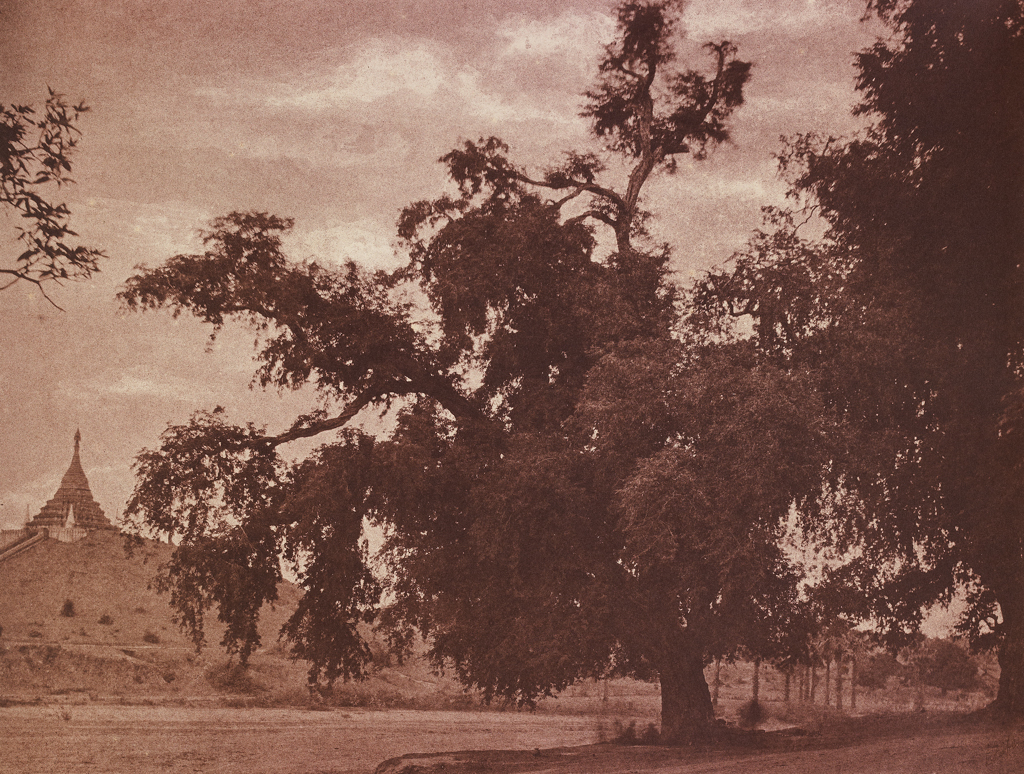
Ye-nan-gyoung: Tamarind Tree, August 14–16, 1855
Paula and Robert Hershkowitz
By contrasting the giant silhouetted tamarind tree in the foreground with the distant hilltop pagoda, Tripe adroitly revealed the natural and manmade wonder of Ye-nan-gyoung. Tripe and his fellow officers were impressed not only by the “striking and fantastic” beauty of the place but also by the pungent smell of the naturally occurring petroleum that permeated the air. (“Ye-nan-gyoung” means fetid water rivulet in Burmese.)
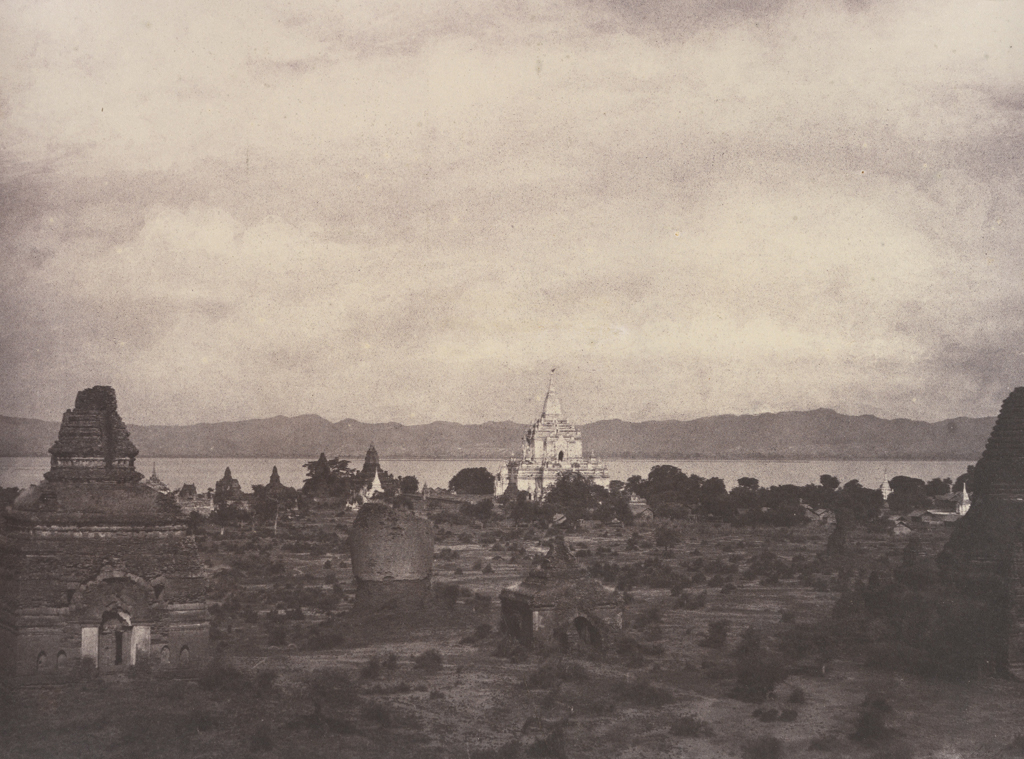
Pugahm Myo: Distant View of Gauda-palen Pagoda, August 20–24, 1855
Lent by The Metropolitan Museum of Art, Purchase, The Buddy Taub Foundation, Dennis A. Roach and Jill Roach, Directors, and Alfred Stieglitz Society Gifts, 2012
Although earlier European travelers had celebrated Pugahm Myo as a magnificent site of vast scale, nothing had prepared Tripe and others on this expedition for its reality. As the mission’s engineer and secretary, Henry Yule, wrote: “This is certainly the most extraordinary place we have yet seen. Fancy pagodas of every form and colour, some of very great extent, some quite minute — here in perfect preservation, here a mound of ruin — and these spread out over miles and miles of ground.”

Pugahm Myo: Gauda-palen Pagoda, August 20–24, 1855
The British Library, London
The photographs Tripe made on the mission to Burma reveal his methodical approach. Taken together, his studies of the region constitute carefully planned sequences of pictures that show the sites from varying distances and viewpoints, providing a systematic visual record of them. At Pugahm Myo, he first photographed the scene from afar (see the previous slide) and then moved closer to depict the buildings and their layout in greater detail.
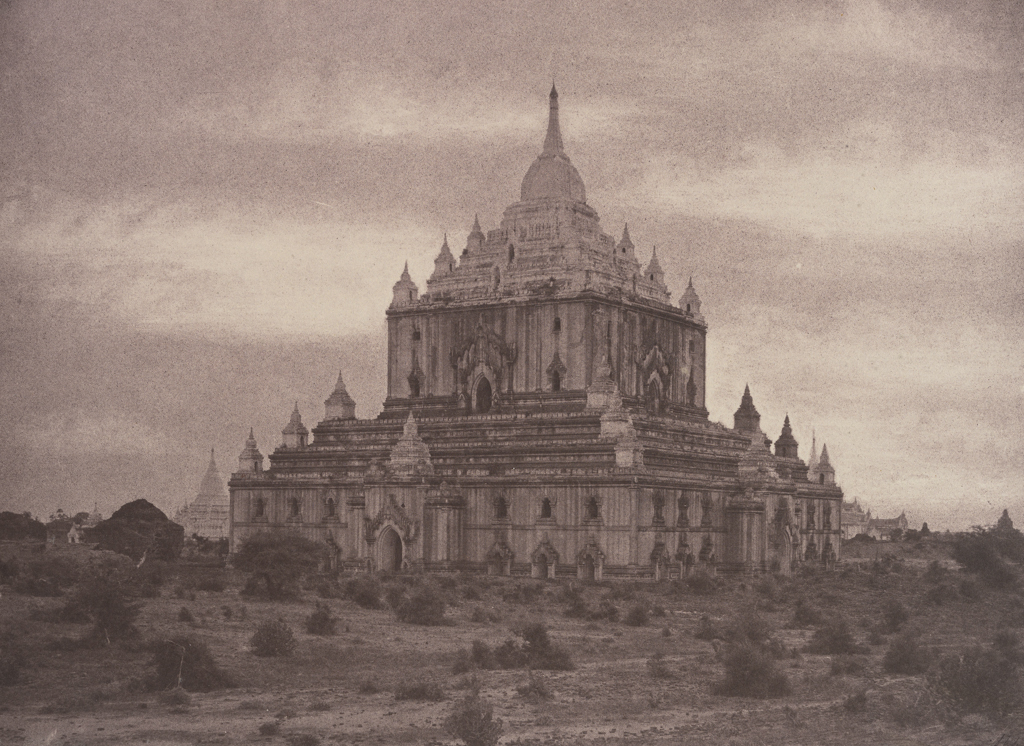
Pugahm Myo: Thapinyu Pagoda, August 20–24, 1855
Lent by The Metropolitan Museum of Art, Purchase, The Buddy Taub Foundation, Dennis A. Roach and Jill Roach, Directors, and Alfred Stieglitz Society Gifts, 2012
Because early photographic negatives were overly sensitive to blue, clouds were difficult to record. To evoke them and other atmospheric effects, Tripe retouched his negatives by applying pigment in thin layers, gradually building up density and form with highlights and shadows. Demonstrating his dexterity, he would bring his retouching up to the edge of a structure, defining its silhouette with the precision of an architectural draftsman. The next slide illustrates a detail of the corresponding negative and Tripe's retouching of the sky.
.jpg)
Detail from a waxed-paper negative by Linnaeus Tripe of Pugahm Myo: Thapinyu Pagoda, August 20–24, 1855
Royal Photographic Society Collection, National Media Museum, Bradford
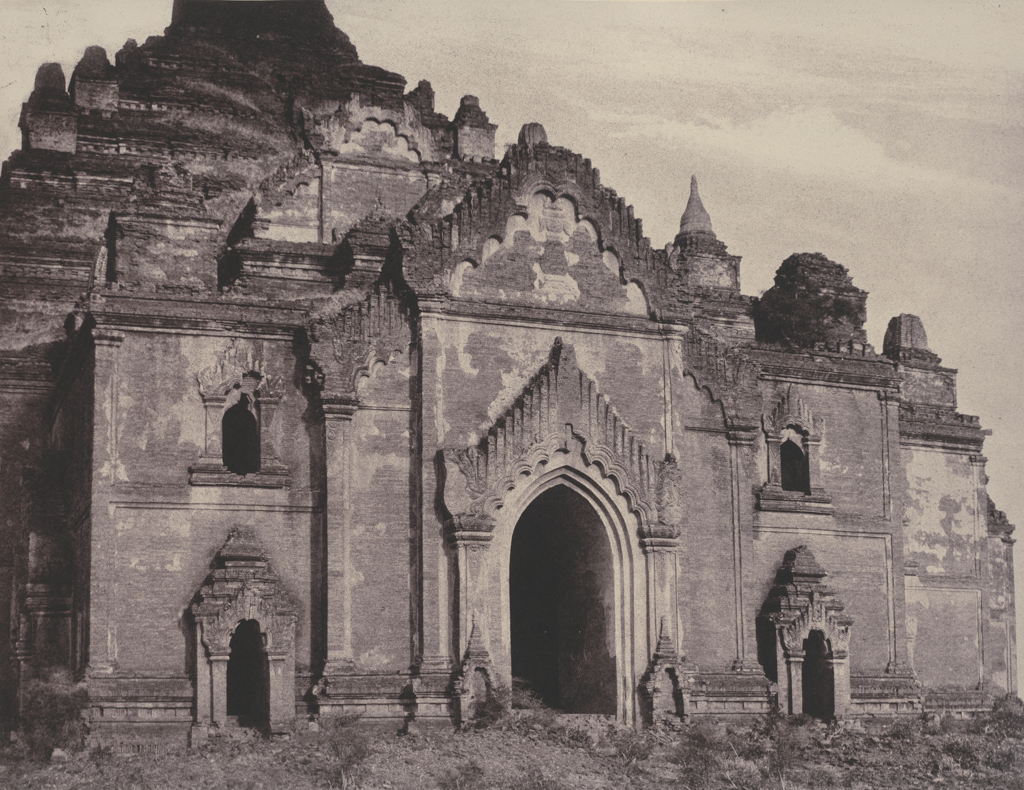
Pugahm Myo: East Facade of Damayangyee Pagoda, August 20–24, 1855
National Gallery of Art, Washington, Edward J. Lenkin Fund, 2012.87.24
This 12th-century pagoda at Pugahm Myo differs from traditional Indian temple architecture and reflects Islamic influence in its use of brick vaults and pointed arches.
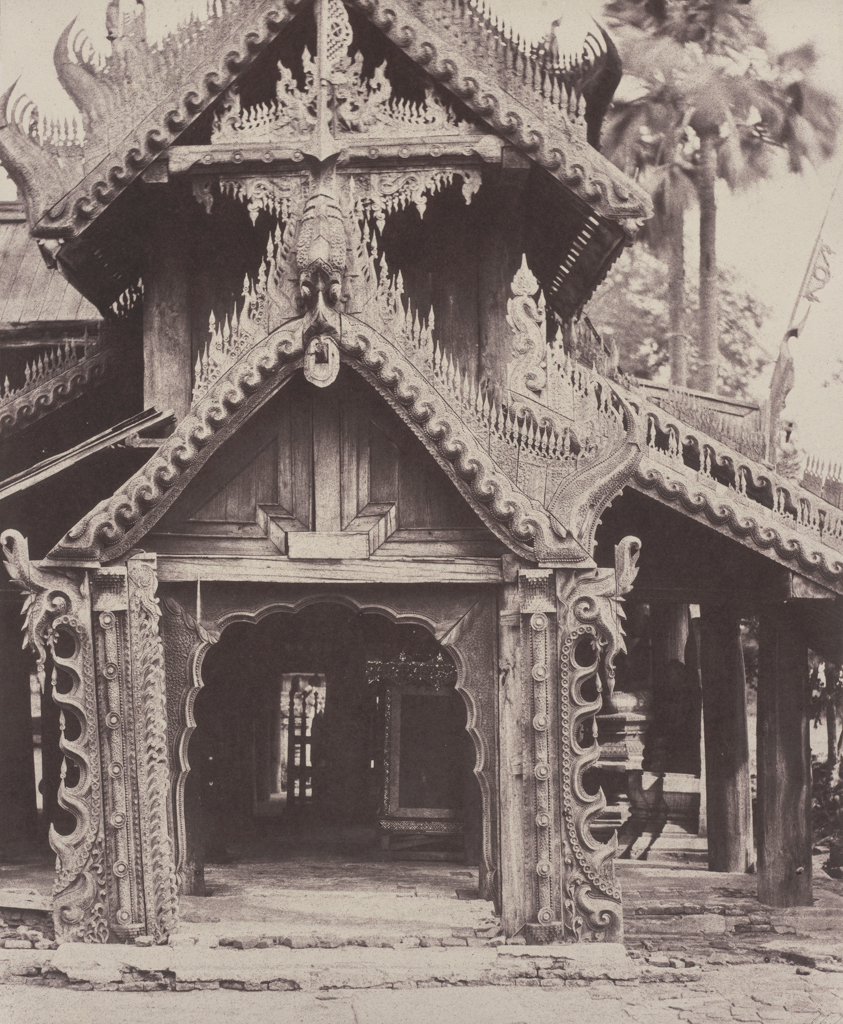
Pugahm Myo: Carved Doorway in Courtyard of Shwe Zeegong Pagoda, August 20–24 or October 23, 1855
National Gallery of Art, Washington, Diana and Mallory Walker Fund, 2012.87.16
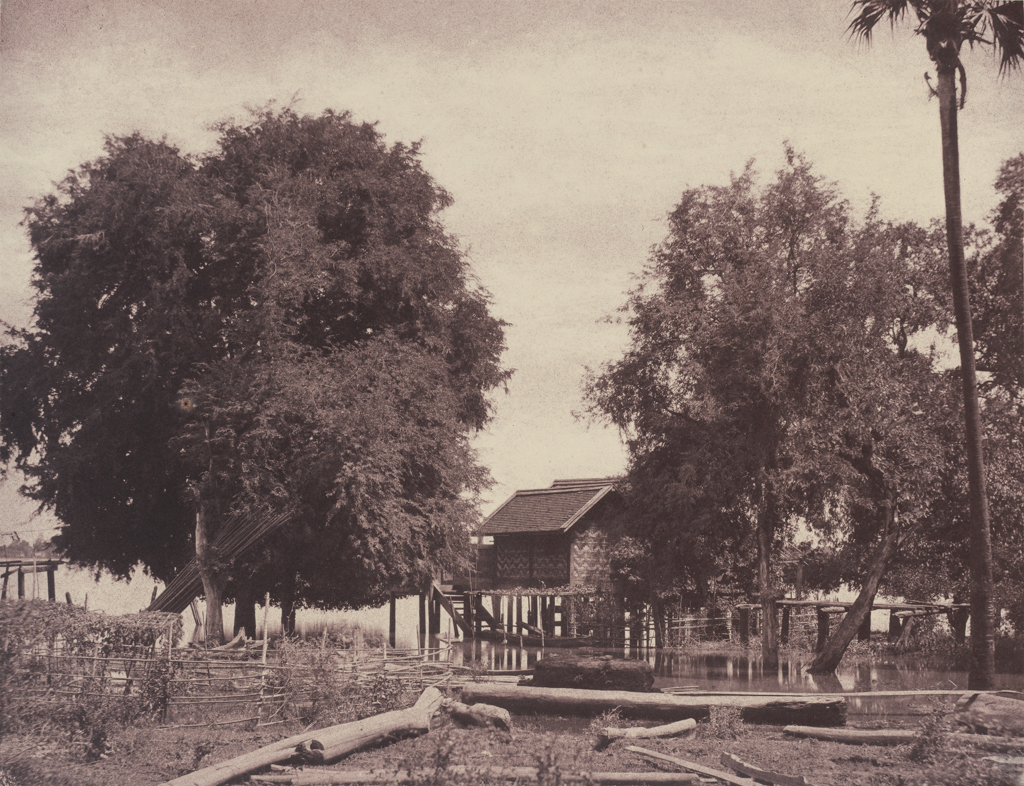
Tsagain Myo: View near the Irrawadi River, August 29–30, 1855
National Gallery of Art, Washington, Stephen G. Stein Fund, 2012.87.7
In addition to painting clouds into his photographs, Tripe frequently retouched the foliage. Green and red tones were often underexposed because of the limitations of early photographic chemistry, making foliage appear darker and less articulated in the final print than to the eye. Tripe compensated by retouching his negatives with a series of marks that stood for leaves or their highlights. He also used delicate strokes to suggest light transmitted through a latticework of leaves.
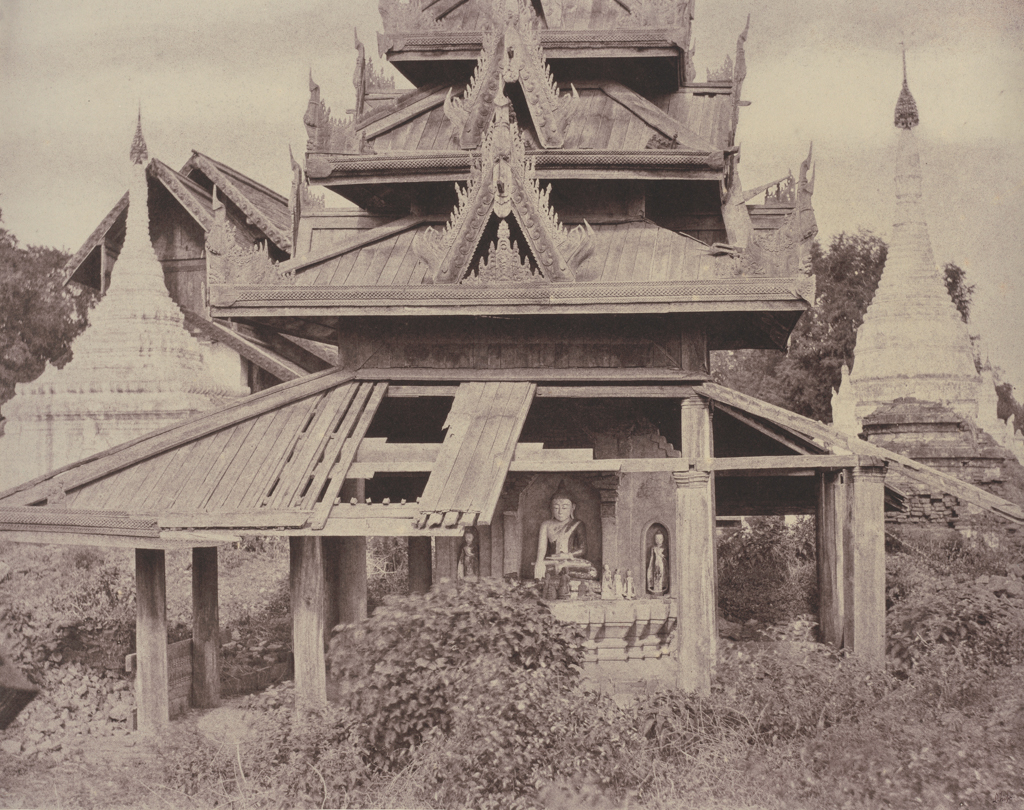
Tsagain Myo: Ruined Tazoung, August 29–30, 1855
National Gallery of Art, Washington, Stephen G. Stein Fund, 2012.87.5
This small, ruined wooden shrine, or pavilion (tazoung), flanked by white-plastered pagodas, reflected the Burmese Buddhists’ belief that they gained greater spiritual merit by establishing a new shrine or monastery than by repairing an existing one. However, structures like the Shwe Dagon Pagoda, which contained relics of the Buddha, underwent numerous renovations (see slide 13 in the next section: Amerapoora).
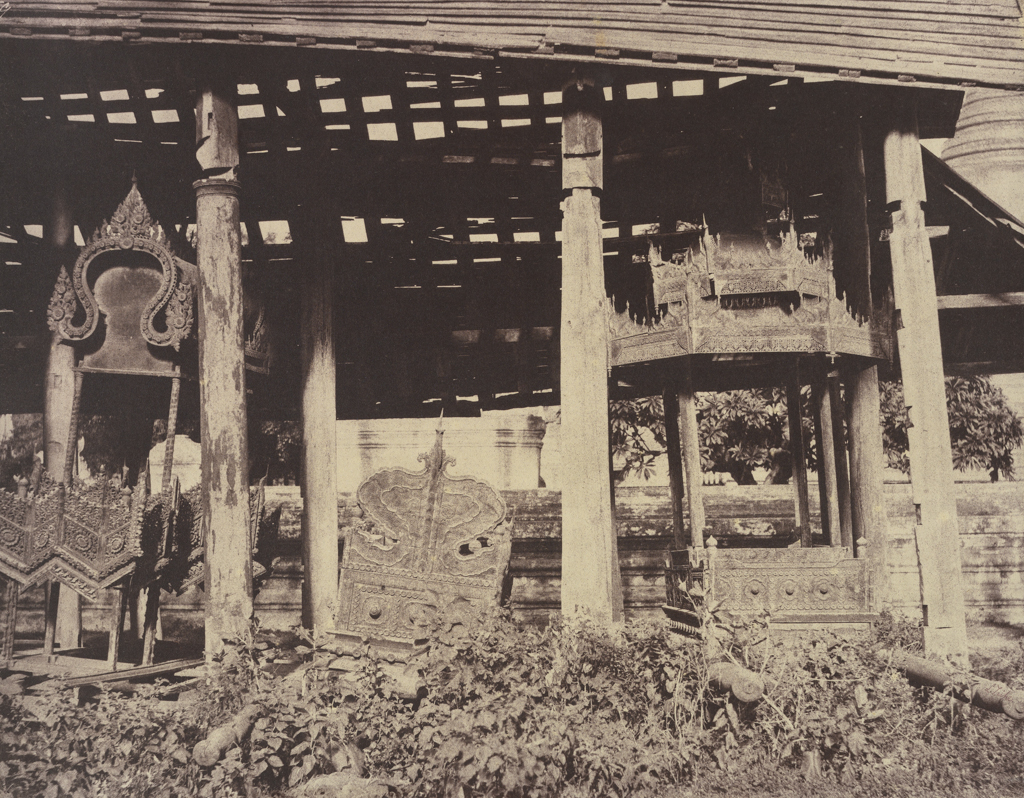
Tsagain Myo: Litters under a Shed, August 29–30, 1855
Lent by The Metropolitan Museum of Art, Purchase, The Buddy Taub Foundation, Dennis A. Roach and Jill Roach, Directors, and Alfred Stieglitz Society Gifts, 2012

Tsagain Myo: A Roadway, August 29–30, 1855
Lent by The Metropolitan Museum of Art, Purchase, The Buddy Taub Foundation, Dennis A. Roach and Jill Roach, Directors, and Alfred Stieglitz Society Gifts, 2012
Before proceeding to their final destination in Amerapoora, members of the expedition waited in Tsagain Myo. Tripe made 12 negatives in two days (a large number considering the complexity of the undertaking), including this picturesque view of rustic dwellings nestled among towering trees along a dusty road.